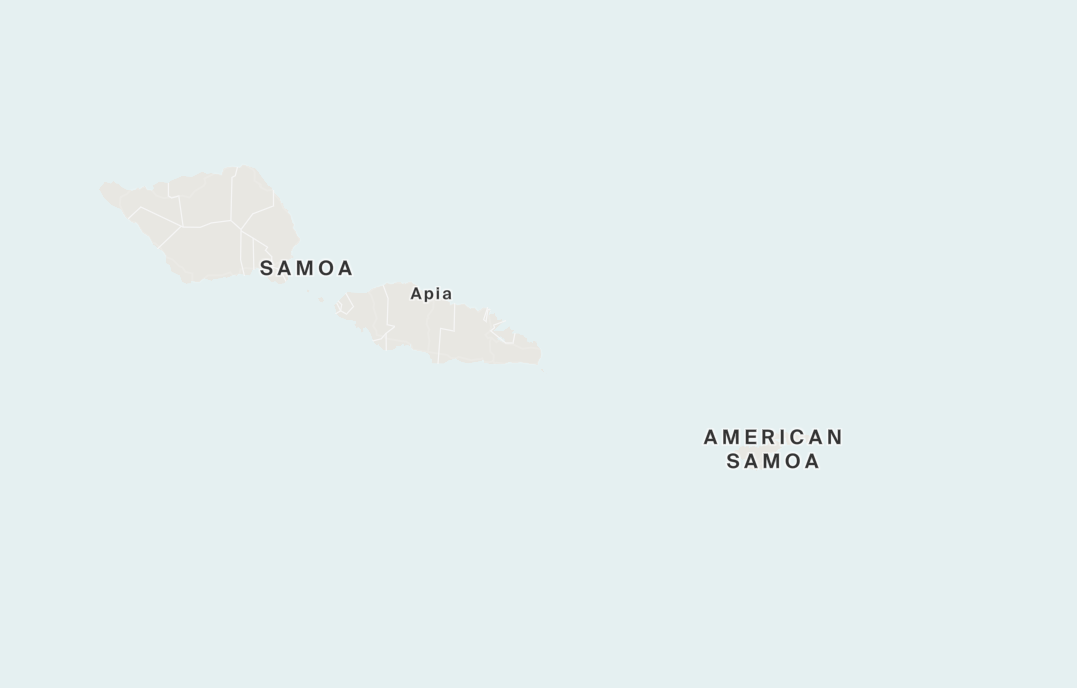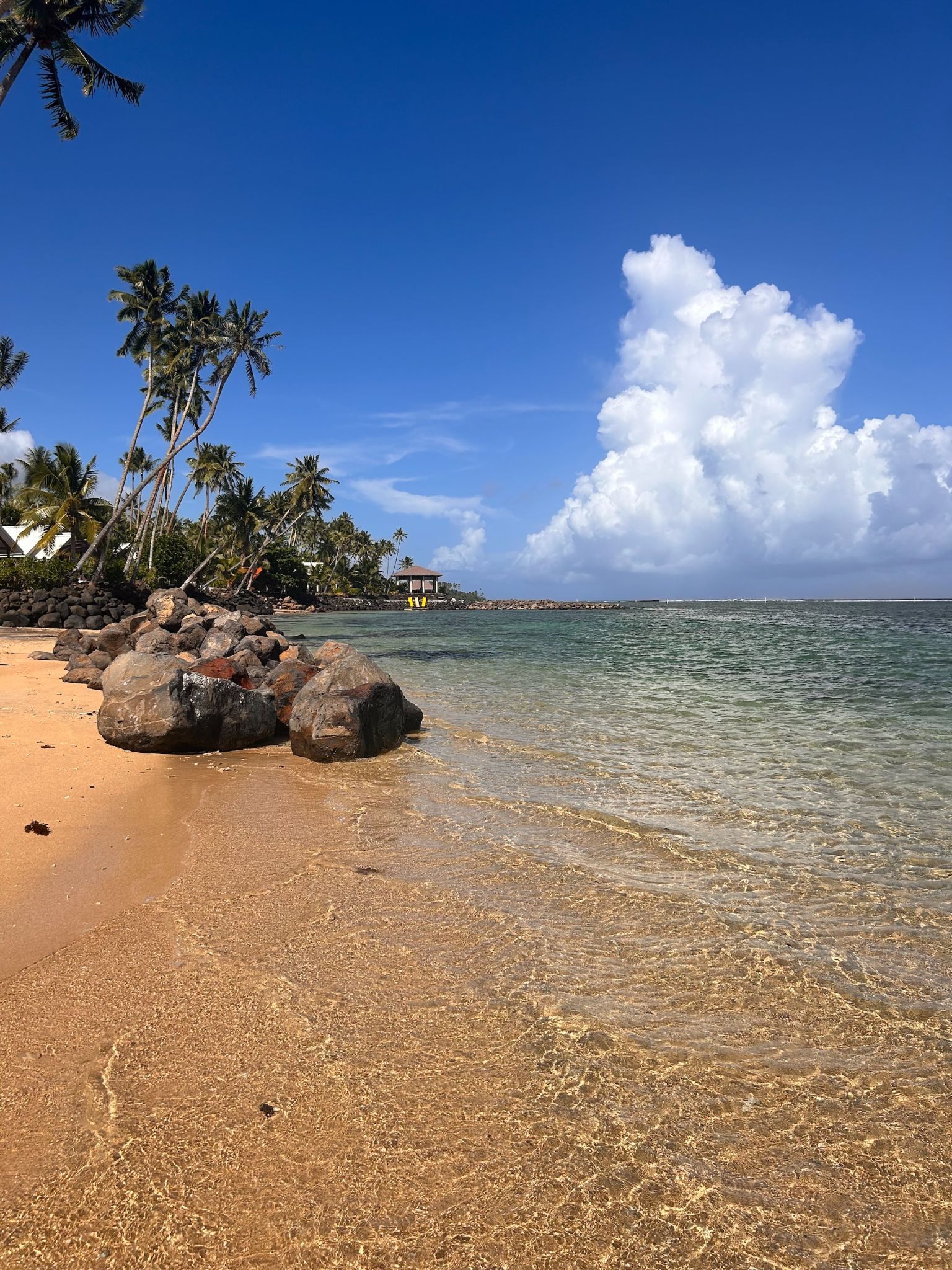What is Samoa DNA Ethnicity on Ancestry?
The results of our AncestryDNA tests may sometimes be what we expect or on occasion may be a big surprise. Either way, often we need a little more information regarding some of the regions that arise in our ethnicity estimates.

One region that is not at all uncommon is the Samoa DNA region. Those who still live in this region already understand all about its history and culture. There are others, however, who may never have even visited or in fact been aware that they have ancestors from that area.
In this post we will go into more detail with regards to the history, geography and culture of the Samoa region. We will also discuss what it means to be from this region and how easy or difficult it might be to trace our roots in the Samoa Region.
What Is the Samoa DNA Region?
The Samoa DNA region as the name suggests focuses on the Pacific Ocean nation of Samoa encompassing the main islands of Savai’I and Upolu. It also includes the two smaller islands of Manono and Apolima as well as 40 miles to the east of the island of American Samoa.

Samoa Region History
Early Settlers
Archaeological sites in Samoa indicate the first peoples to make their home on the islands were part of the Lapita culture. These Austronesian peoples who originally came from Taiwan but through a seafaring society made their way to Samoa in a gradual migration.
It is likely that Austronesians who left Taiwan first settled in the Philippines becoming the Lapita culture. Some of these groups then moved on to Melanesia again settling in the islands of the region. Over time groups from Melanesia would make their way further east and found the region we call Samoa today.
The earliest human remains uncovered in Samoa date back 2,900 – 3,500 years ago placing the arrival of the first peoples of Samoa some time prior to this. Scientists using genetic research suggest that these Austronesians may have arrived between 2,500 – 1,500 BC. This is considered to be during the final period of eastward expansion by the Austronesians.
Connections With Neighboring Peoples
Evidence suggests that these early peoples were very adept at sailing which seems to have allowed them to travel between the local islands. Sociocultural and genetic ties appear to exist between Samoa, Fiji, and Tonga. This would indicate not only trade between these island nations but also intermarriage.
European Arrival
In 1722 Jacob Roggeveen, a Dutchman, was the first known non-Polynesian to set eyes on the Samoan islands. This visit by Europeans came from French explorer Louis-Antoine de Bougainville. De Bourgainville would name them the Navigator Islands in 1768. There was limited contact with the islands prior to the 1830s, until English missionaries of the London Missionary Society, whalers, and traders began arriving and making landfall.

The whaling industry in particular played a part in the early economic development of Samoa especially from American whalers. They would arrive on the islands seeking to resupply their vessels and eventually would start to hire islanders for their crews. This would continue from the 1830s through to the 1870s.
Several nations would squabble over who should have control of the Samoan islands including Britain, Germany and America. The commercial gains that could be made by controlling the region were attractive to these nations. The conflict fell short of all out war but each nation aligned with different native groups who would have their own internal conflicts.
This Samoan crisis would come to a critical turning point in March of 1889 when all three colonial contenders sent warships into Apia harbor. A larger-scale war seemed to be imminent until a massive storm on 15 March 1889 caused damage to the anchored warships. This essentially ended the military conflict.
The second Samoan war however did result in fighting between the nations starting in 1899. Less than a year after hostilities began a treaty was signed that divided the islands between the US, Germany and Britain. The United States received the eastern islands which are today known as American Samoa. Germany got western Samoa and Britain relinquished their claims in favor of Germany terminating their own rights to Tonga, the Solomon Islands and any territorial alignments in West Africa.
World War I
Distracted by the First World War Germany lost control of its interests in Samoa when in the first month of the conflict New Zealand forces made landfall in what was known at that time as Western Samoa. New Zealand would control the islands from 1914 – 1961 under trusteeship awarded them by the League of Nations.
In 1961 after a long political battle for independence New Zealand’s trustee agreement came to an end and with the Western Samoa Act the islands became an independent nation. American Samoa however would remain a territory of the United States.
How Did You Get Samoa Region DNA?
If you already know that you had family who came from Samoa or any of the bordering states then you know why you have Samoa region DNA. If this result came as a surprise you may not know how exactly you came by DNA from this region.
If you have a sizable percentage of DNA from this region then it is likely you have an ancestor who was born in or close to the country of Samoa.

Is the Result Accurate?
When it comes to ethnicity estimates the higher the percentage you have from a certain region the more likely it is to be accurate. If your percentage is low, however, then it is harder to pinpoint exactly where your most recent ancestors came from.
A low result could mean a distant ancestor from that region. It is best to focus on your highest rated region's matches to determine where your ancestors came from more recently. A low percentage can often be hard to locate because the ancestor in question could be many generations back in your tree.
How to Research my Ancestry from These Regions
The results of a DNA ethnicity test are of course a great place to start especially if there is an unexpected result found in the report. As always of course the DNA cannot tell the whole story and we need to actually do the research work.
A percentage on an ethnicity estimate means very little unless you follow through and start building up your family tree. The relevant ancestors may be several generations back and it may take a lot of research to discover who they were.
If you have specific regions mentioned in your report then you have a good idea of where your ancestor may have originated from. Ancestry DNA even has migratory information from some of these regions through to the final settlement places in the United States or elsewhere in the world.
Using Ancestry you may be able to determine not only who your ancestors were but where they are from in the region and perhaps the reason they decided to move.
Samoan Migration
The connection with New Zealand from the beginning of WWI saw a slow migration from the islands. Prior to this there had been migration although in 1874 there were only 6 Samoan individuals living in New Zealand. Today there are around 50,000 people who identify as ethnically Samoan in New Zealand.
Samoan migration to the United States began much earlier with the first Polynesian colony being founded in Utah. Converts to the Mormon faith, this colony included not just Samoans but Hawaiians, Tahitians and Māori’s.
When the eastern islands of Samoa became American Samoa in 1900 this would clear the way for more extensive migration to the US. The 2021 US census estimates there are 243,682 people of Samoan descent living in the United States. This includes individuals who migrated from both the former Western Samoa and American Samoa.
Final Thoughts
The Samoan islands were settled a few thousand years ago by Austronesians out of Southeast Asia. They are seafaring peoples whose ancestors navigated thousands of miles of ocean. As tribal peoples they practiced headhunting during their internal pre-European conflicts and still maintain a warrior spirit today.
The bulk of the migration out of Samoa has been to either New Zealand or the United States although other regions in the Pacific were also landing points for Samoan migrants.
Link To or Reference This Page
We spent a lot of time downloading, cleaning, merging, and formatting the data that is shown on the site.
If you found the data or information on this page useful in your research, please use the tool below to properly cite or reference Name Census as the source. We appreciate your support!
-
<a href="https://namecensus.com/blog/what-is-samoa-dna-ethnicity-on-ancestry/">What is Samoa DNA Ethnicity on Ancestry?</a>
-
"What is Samoa DNA Ethnicity on Ancestry?". NameCensus.com. Accessed on May 7, 2024. https://namecensus.com/blog/what-is-samoa-dna-ethnicity-on-ancestry/.
-
"What is Samoa DNA Ethnicity on Ancestry?". NameCensus.com, https://namecensus.com/blog/what-is-samoa-dna-ethnicity-on-ancestry/. Accessed 7 May, 2024
-
What is Samoa DNA Ethnicity on Ancestry?. NameCensus.com. Retrieved from https://namecensus.com/blog/what-is-samoa-dna-ethnicity-on-ancestry/.
